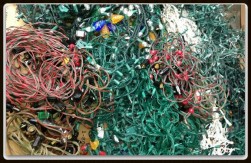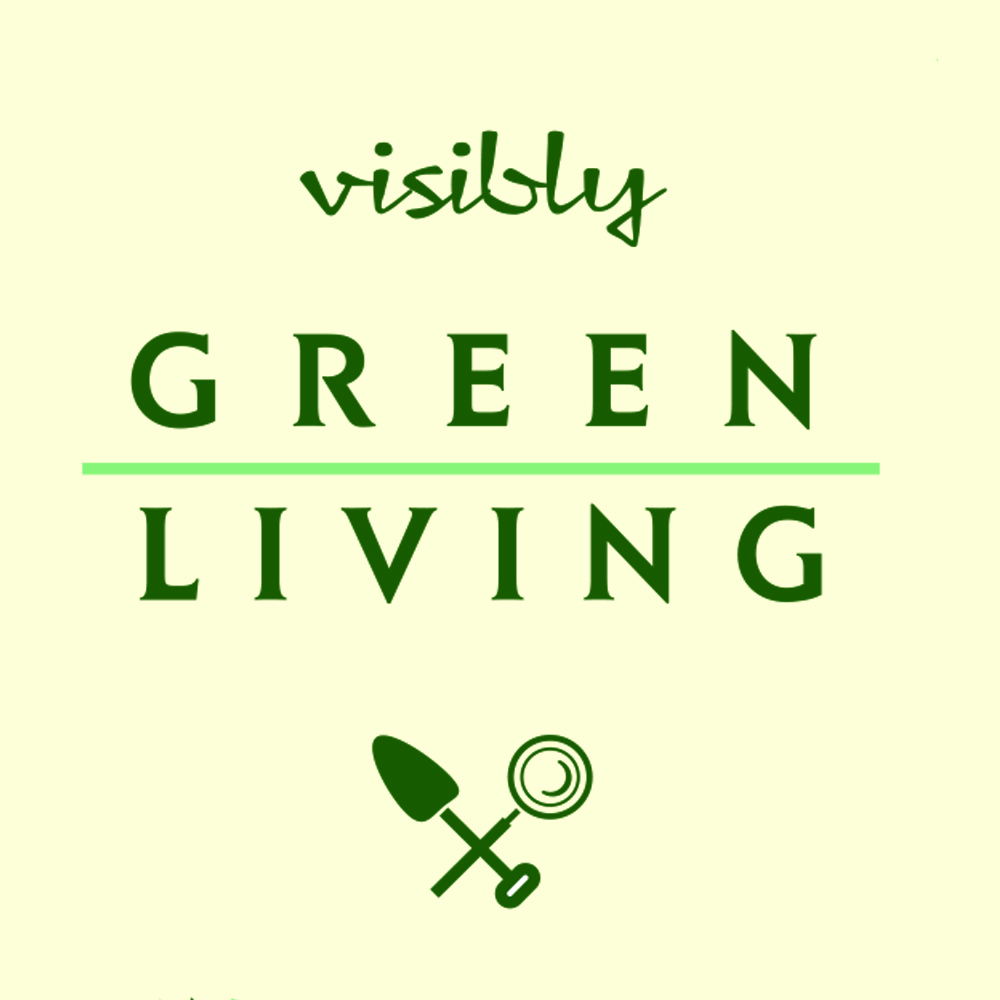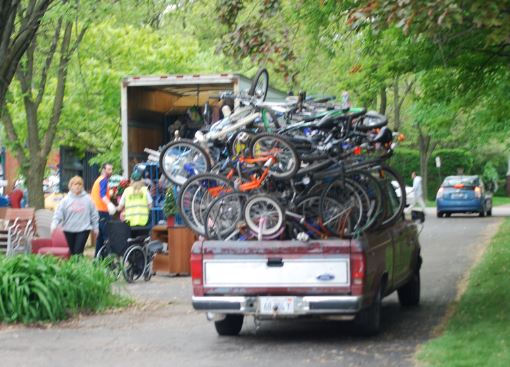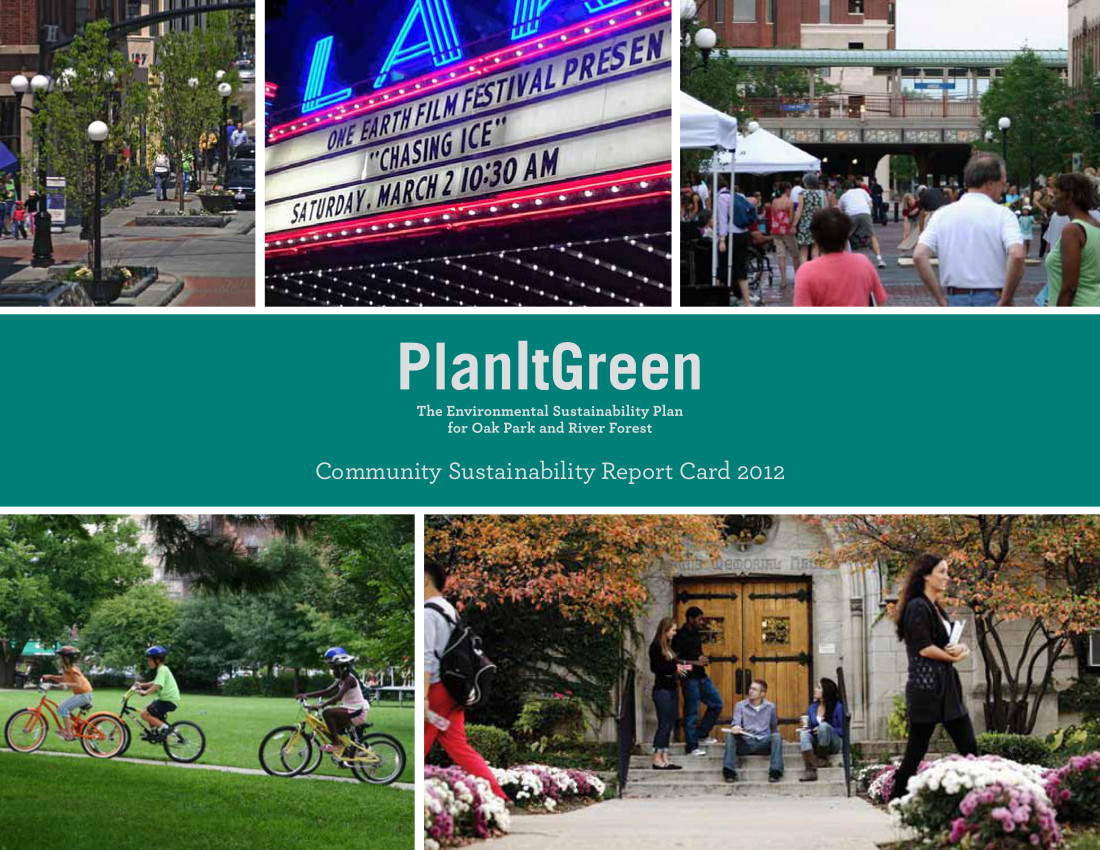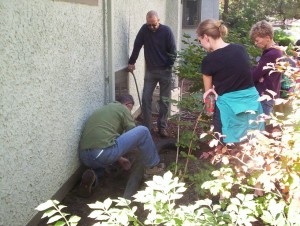Rachel Carson's biographer, Linda Lear, has done a great service by sharing a sample of these virtually unknown Carson writings in the anthology Lost Woods: The Discovered Writing of Rachel Carson. These give us a glimpse of the living breathing woman behind the environmental icon.
 The Lost Woods of Rachel Carson
The Lost Woods of Rachel Carson
By Bob Simpson
“Those who contemplate the beauty of the earth find reserves of strength that will endure as long as life lasts. There is something infinitely healing in the repeated refrains of nature -- the assurance that dawn comes after night, and spring after winter.” ? Rachel Carson
Rachel Carson had a life-long love affair with nature that was accompanied by a deep and terrible sense of loss because of the human destruction wreaked upon the biosphere. Although Carson’s literary fame is based on only 5 books, she also wrote numerous short pieces during her employment at the US Fish and Wildlife Service, as well as newspaper stories, magazine articles, speeches and personal letters. She was among the finest writers of the 20th century USA.
A woman destined to be a writer
Carson’s first nature writing was published at the age of 15 in St Nicholas Magazine, a children’s literary magazine that helped launch the careers of William Faulkner, F. Scott Fitzgerald, e.e. cummings, Edna St.Vincent Millay and E.B White.
A selection follows:
 “The call of the trail on that dewy May morning was too strong to withstand. The sun was barely an hour high when Pal and I set off for a day of our favorite sport with a lunchbox, a canteen, a notebook, and a camera….
“The call of the trail on that dewy May morning was too strong to withstand. The sun was barely an hour high when Pal and I set off for a day of our favorite sport with a lunchbox, a canteen, a notebook, and a camera….
...Soon our trail turned aside into deeper woodland. It wound up a gently sloping hill, carpeted with fragrant pine needles. It was our own discovery, Pal's and mine, and the fact gave us a thrill of exultation. It was a sort of place that awes you by its majestic silence, interrupted only by the rustling breeze and the distant tinkle of water.”--- from “My Favorite Recreation” by Rachel Carson
As a lyrical prose stylist with a love of poetry, she paid meticulous attention to the craft of writing as well as to the exacting details of science. Having grown up as a voracious reader and knowing that she wanted to be a writer from a young age, she had an abiding faith in the power of the printed word.
Rachel Carson compulsively wrote and rewrote. She read her drafts aloud and then had others read them to her. Each word had to be in its proper niche in that complex interrelationship among words, sentences, paragraphs, sections and chapters that make up a fine work of literature. Her approach to writing mirrored the ecologically complex web of life that continued to astonish and inspire her throughout her life.
She believed that written and spoken words (she became an accomplished public speaker) could help generate a love of nature based on the human capacity for imagination. She was concerned about the increasing alienation of humans from the natural world.
Understanding that increasing urbanization and suburbanization were part of this alienation, she wrote about science from a storytelling point of view. She hoped that her readers could enter the world of biological science through vivid language, even if their lives were surrounded by concrete, asphalt and petrochemical fumes. She had an abiding faith that ordinary people could come to understand the precepts of science and develop an appreciation of nature.
 The beginnings of her professional writing career
The beginnings of her professional writing career
Her first book, Under the Sea Wind, may be termed “science fiction”, in the sense that it used the science of marine biology as she told the life stories of an Atlantic eel, an Atlantic mackerel and a sanderling (a shore bird).
I was 8 years old when I first read this book, curled up on the floor of our Wheaton, Maryland bungalow, hundreds of miles from the dark North Atlantic home of Scomber the mackerel, my favorite of the 3 characters. Scomber’s many adventures seemed as real to me as the reading lamp that illuminated them for me.
Carson wrote a detailed description for the publisher’s marketing department about her writing process. She explained that most books about the sea were written from a human vantage point. That is what she tried to avoid:
“I very soon realized that the central character of the book was the ocean itself. The smell of the sea’s edge, the feeling of vast movements of water, the sound of waves, crept into every page, and overall was the ocean as the force dominating all its creatures.”
Ironically Carson never saw the ocean until she graduated from college. She came from a somewhat impoverished Pennsylvania family and had never traveled far. She originally relied on the poetry of John Masefield and the novels of Joseph Conrad to help her imagine the sea and its wonders. Perhaps this early experience is what gave her such a faith in the ability of words to create worlds.
Throughout her writing career she tried to pass on the historical memory of the natural world as she perceived it and as others before her had done. While researching a series of radio scripts she wrote while at her job at US Fisheries Commission (later the US Fish and Wildlife Service), she also developed newspaper articles on natural history which she sold to supplement her income in the harsh Depression years.
Typical of these was one entitled “The Fight for Wildlife Pushes Ahead” which was published in the Richmond Times-Dispatch Sunday Magazine in March of 1938. In it she reviewed the genocidal slaughter of American wildlife that caused the extinction of such creatures as the passenger pigeon, relentlessly shot into extinction even though at the time of European colonization, its flocks once darkened the skies of the East.
“A scant hundred years ago, more than half of America was unspoiled wilderness…But what of wildlife today? The last heath hen perished on the island of Martha's Vineyard in 1933, and the passenger pigeon is now a creature of legend. Salmon are virtually gone from the rivers of New England, and the Atlantic Coast shad fisheries have declined some 80% within half a century...The ranks of elk were so thin by 1904 that domestication was urged as the only means of preventing their extinction.”
Carson loved wildlife for its own sake, but she was acutely aware that many of her readers did not. She explained that wildlife supported a multi-million dollar hunting, fishing and wildlife observation industry, a powerful argument for conservation during the Great Depression. She called for more land to be put aside for wildlife, not simply for the sake endangered species, but to stop the spread of soil loss that had created the terrifying Dust Bowl and to prevent flooding caused by denuded hillsides.
But Carson’s writing career did not really begin to take off until she received a rejection from her boss at the US Fisheries Commission. The piece that she submitted,”Undersea”, was just too beautifully written for a government manual. With a smile he suggested sending it to the Atlantic Magazine where editor Edward Weeks eventually published it. It became the basis of her first book, Under the Sea Wind.
Rachel Carson: The woman who melded biology and literature
Carson was a woman in the male dominated field of science. Although there were a few women scientists in the field of U.S. biology, they often met with cruel discrimination. That was the fate of Mary Skinker, Carson’s beloved college science professor. Carson stood by Skinker throughout her struggles to remain a scientist in a hostile work environment.
Carson was a skilled laboratory and fieldwork scientist, but was hired at the Fisheries Commission for her writing talent. She rose quickly in the government ranks to become head of the US Fish and Wildlife Service publications department. Colleagues remembered her as an exacting, but patient editor who demanded from others no more than she expected of herself.
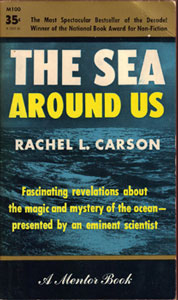 Carson was only the second woman even hired by that department and her government science career flourished mostly because she worked in publishing. She encountered sexism on the job, but resisted it with her formidable wit and intelligence, along with some help from her male allies.
Carson was only the second woman even hired by that department and her government science career flourished mostly because she worked in publishing. She encountered sexism on the job, but resisted it with her formidable wit and intelligence, along with some help from her male allies.
An example was her desire to board the government research ship Albatross with its 50 man crew to visit the Georges Bank in the North Atlantic. This caused “consternation” among her male superiors because no woman had ever set foot on the Albatross before. She explained that she could manage publications about the North Atlantic better if she had direct experience at sea.
It was finally decided that two women would be ok so she invited her literary agent Marie Rodell. Rodell jokingly called herself Carson’s “chaperone”. The physical rigors and dangers aboard a fishing vessel in the frigid North Atlantic proved no obstacle to either woman and they were quickly accepted by the crew once the voyage was underway.
Feeling constricted by the confines of government, she retired from the US Fish and Wildlife Service with the publication of The Sea Around Us in 1951. The book had risen to the top of the best seller list and brought her a long sought economic security. Earnings from her writing allowed her to have a home in Silver Spring, MD near Washington DC as well as a cottage on the Maine coast.
This was followed by another bestseller, The Edge of the Sea, with its passionate descriptions of life along the shore. Under the Sea Wind, which was virtually ignored when it appeared only a month before the 1941 attack on Pearl Harbor, was reissued to acclaim and brisk sales.
Carson’s sea trilogy achieved great popularity in the 1950s, when rising US affluence did not assuage a sense of social isolation and emotional emptiness. Nor did it quell the fears generated by the Cold War and its frightening possibilities of nuclear destruction. As one of her readers wrote to her:
“We have been troubled about the world, and had almost lost faith in man; it helps to think about the long history of the earth, and how life came to be. When we think in terms of millions of years, we are not so impatient that our problems can be solved tomorrow. “
From reading the many letters she received from readers, she drew certain conclusions about why people responded to her books so strongly. After winning the 1952 National Book Award for The Sea Around Us she shared these words:
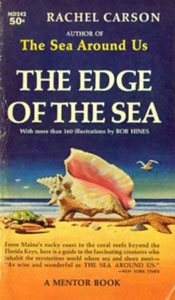 “If there is poetry in my book about the sea, it is not because I deliberately put it there, but because no one could write truthfully about the sea and leave out the poetry...we have looked outward at the earth [man] has inhabited so briefly and at the universe in which our earth is so minute a part. Yet these are the great realities, and against them we see our human problems in a different perspective. Perhaps if we reversed the telescope and looked at man down these long vistas, we should find less time to plan our own destruction.”
“If there is poetry in my book about the sea, it is not because I deliberately put it there, but because no one could write truthfully about the sea and leave out the poetry...we have looked outward at the earth [man] has inhabited so briefly and at the universe in which our earth is so minute a part. Yet these are the great realities, and against them we see our human problems in a different perspective. Perhaps if we reversed the telescope and looked at man down these long vistas, we should find less time to plan our own destruction.”
Some people were mystified by why a woman would take so much interest in the sea. Carson addressed this at an author luncheon in New York:
“People often seem to be surprised that a woman should've written a book about the sea. This is especially true, I find, of men. Perhaps they been accustomed to thinking of the more exciting fields of scientific knowledge is exclusively masculine domains. In fact, one of my correspondents not long ago addressed me as “Dear Sir" - --explaining that although he knew perfectly well that I was a woman, he simply could not bring himself to acknowledge the fact.”
Carson went on to explain that her interest was at first “sensory and emotional” and that the “intellectual” came later. Carson had received many letters from readers of all social classes telling of their own deep feelings about the sea. She spoke of exploring tide pools and seeing people just staring out at the ocean, lost in their own thoughts and emotions. To her this sense of wonder was a human trait, an almost spiritual longing, and one to be encouraged, especially among the young:
“If I had influence with the good fairy who is supposed to preside over the christening of all children I should ask that her gift to each child in the world be a sense of wonder so indestructible that it would last throughout life, as an unfailing antidote against the boredom and disenchantments of later years, the sterile preoccupation with things artificial, the alienation from the sources of our strength.”
Carson believed that women had a deeper appreciation of both beauty and wonder than men did. She was quite candid about this in a speech she gave to the Theta Sigma Phi Society of Women Journalism in 1954. She told them that she was not afraid of being labeled a “sentimentalist” and that natural beauty was necessary to the “...spiritual development of any individual or society...”:
“...I believe it is important for women to realize that the world of today threatens to destroy much of that beauty that has immense power to bring us a healing release from tension. Women have a greater intuitive understanding of such things. They want for their children not only physical health but mental and spiritual health as well. I bring these things to your attention tonight because I think of your awareness of them will help, whether you're a practicing journalists, or teachers, or librarians, or house wives and mothers.”
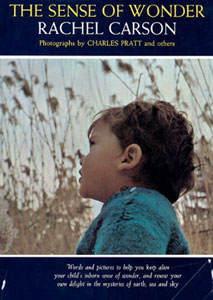 She wrote popular articles in magazines with large female readerships and became one of the most respected women of the 1950s, a time when women were supposed to stay home with the children and stay out of public affairs. Although she had many male colleagues, some of whom became close friends like New Yorker editor William Shawn and wildlife illustrator Bob Hines, her closest attachments were with women. Among these were her mother, Marie Rodell, Marjorie Spock, Lois Crisler, Beverly Knecht and especially Dorothy Freeman.
She wrote popular articles in magazines with large female readerships and became one of the most respected women of the 1950s, a time when women were supposed to stay home with the children and stay out of public affairs. Although she had many male colleagues, some of whom became close friends like New Yorker editor William Shawn and wildlife illustrator Bob Hines, her closest attachments were with women. Among these were her mother, Marie Rodell, Marjorie Spock, Lois Crisler, Beverly Knecht and especially Dorothy Freeman.
Carson and Freeman had an intense love relationship that lasted for many years and Freeman became Carson’s greatest source of emotional strength. Carson never married and Freeman’s husband Stan gave his full approval to their close relationship. Carson often shared her observations of nature with Dorothy Freeman through her many letters, several of which are included in Lost Woods. Carson also shared with Dorothy Freeman the intense difficulties she endured because of her complicated ofttimes distressing family life.
Although technically a single woman, Carson assumed the role of breadwinner for her mother and at various times provided financial support for others in her family. When her sister died, she adopted her son Roger, then a small child who displayed symptoms of severe ADHD. Carson had become a single mom. She also became caregiver to her own mother when her health began to fail. Although she desperately wanted to do more research and writing, she felt a deep sense of obligation to her family responsibilities.
These financial and emotional burdens took a toll on Carson’s physical and psychological well being. She sometimes fell into periods of deep depression which kept her from writing at all. Living in a society where such matters were confined to the private sphere meant that Carson’s output as a writer was severely limited. A male science writer would most likely not have had the same experience.
From the wonders of nature to the terrors of industrial society
After the success of her sea trilogy Carson made plans for other pr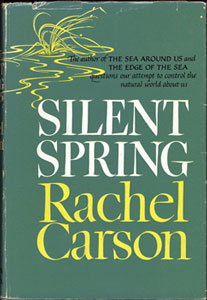 ojects that would inspire love of the natural world. These included books about evolution and ecology. Those plans were never realized. Instead Rachel Carson found herself a leading figure in a resurgent environmental movement.
ojects that would inspire love of the natural world. These included books about evolution and ecology. Those plans were never realized. Instead Rachel Carson found herself a leading figure in a resurgent environmental movement.
Carson had reservations about mass pesticide spraying going back to her days at the US Fish and Wildlife Service. She had even unsuccessfully tried to interest Readers Digest in an article about DDT, the poison developed during World War II to kill malarial mosquitoes, but which went into widespread civilian use after that war ended. She was also very concerned about the dumping of nuclear waste into the sea.
Atomic bombs and DDT had been conceived as weapons of war. Carson came to realize that these and other profitable weapons of mass destruction now threatened the biosphere upon which all life on earth depends.
A liberal Democrat and an admirer of John Kenneth Galbraith’s critique of American capitalism, she had generally avoided making direct political statements in public, couching her criticisms of government, academia and the corporate world in more general humanistic terms. But in 1958, as reports came in of widespread wildlife deaths coming from pesticides to eradicate fire ants and mosquitoes, she made a critical decision.
She set aside her other plans and decided to write a major article on the abuse of pesticides. This idea evolved into Silent Spring. Silent Spring was more than a “fire bell in the night” warning us about why robins were dying agonizing deaths in city parks. Silent Spring also called into question the entire direction of American society with its emphasis on consumerism at all costs and profit without regard for either present or future.
Silent Spring: The writer as political organizer
One of Rachel Carson’s contemporaries was Rosa Parks. A myth was planted that Parks was just an everyday woman who sat in the “white only” section of a segregated bus because she was “tired”. This canard ignores the fact that Parks was a committed activist who had undergone civil rights training at the famed Highlander Folk School. She was also not the first person to sit down in a segregated bus and get arrested, but her individual case helped further a social movement that eventually overthrew Jim Crow.
To a large degree, Rachel Carson was subjected to a similar mythologizing, portrayed as a lone woman who stood against the chemical industry on the strength of her book Silent Spring and her own individual courage. She was not the first person to call attention to the horrors of indiscriminate pesticide spraying. She also developed a large network of scientists, environmental activists and inspired readers to rely upon. She would need that network to write Silent Spring and defend the book from attacks.
Both Parks and Carson were courageous and visionary individuals. Without such individuals social movements would be impossible. But a successful social movement also requires the participation of many other people, whose contributions, great and small, carry inspired visions into reality. Yet myths of the lone individual persist, as if being part of a social movement is a heresy in the USA.
Carson hired research assistants to collect the numerous scientific papers and documents about pesticides she needed to analyze. Both she and her assistants visited the Department of Interior, the Department of Agriculture, the FDA, the Public Health Service, and the National Institutes of Health. In the era before computers, Carson and her assistants worked from notebooks and index cards. Carson reached out to scientists like Bob Rudd, M. S. Biskind, Frank Egler, Edmund O. Wilson, Clarence Cottam and many others to get deeper insights and to help fact check her writing.
Her years at the Fish and Wildlife Service had given her a personal network of government scientists and researchers to rely upon. Many of these people had long worried about pesticides and now thanks to Rachel Carson, their research might reach the public instead of being buried in obscure journals or government documents. Her inquiries eventually came to the notice of powerful government bureaucrats who tried (unsuccessfully) to limit her access to public records.
As Carson struggled with writing Silent Spring, she also had her close friends to support her both emotionally and intellectually. To test the waters about how the public would react to her findings about pesticides she published a letter in the April 10, 1959 Washington Postentitled “Vanishing Americans”. A portion is excerpted below:
“During the last 15 years, use of highly poisonous hydrocarbons and of other organic phosphates allied to the nerve gases of chemical warfare has built up from small beginnings to what a noted British ecologist recently called, 'an amazing rain of death upon the surface of the earth. ‘…Too many of us, the sudden silencing of the song of birds, this obliteration of the colored beauty and interest of birdlife, is sufficient cause for sharp regret. Those who have never known such rewarding enjoyment of nature, there should yet remain a nagging and insistent question: if this rain of death has produced so disastrous effect on birds, what of other lives, including our own?”
Response to her letter was overwhelmingly positive. Carson knew that she could count on her legions of readers to mobilize on her behalf once the book was published. Like it or not, humans are part of the natural world and whatever humans do to nature, humans do to themselves. A key part of her book was the chapter on how pesticides were carcinogens linked to human cancers.
Carson spent time in 1960 working for the John F. Kennedy campaign and joined a Democratic Party natural resources committee, broadening her influence into the mainstream political process. She was also invited to join a small group of powerful Democratic Party women which included Frances Perkins, Eleanor Roosevelt and Jackie Kennedy.
Rachel Carson had already assembled an army of citizen activists, scientists, and political figures. Her book editor Paul Brooks warned her that they would need to work up a “crusade” on the local level and he began recruiting more supporters. Carson consulted with Ruth Scott, an activist in the National Federation of Garden Clubs and the Audubon Society. Her contacts and organizational ability proved invaluable. Marie Rodell made sure that key individuals would get advance copies so that important women’s organizations like the League of Women Voters and the National Association of Women’s Clubs could include the book in their activities.
When the first chapters of Silent Spring were published in the New Yorker and a flood of mostly positive letters poured in, Carson braced herself for a grueling round of public appearances. Well funded attacks from powerful chemical corporations were already underway and needed to be countered. Velsicol Chemical, the maker of chlordane, was threatening a a lawsuit. Dupont’s PR department labored for many hours to produce a media analysis accurately predicting the book’s enormous impact.
But as she edited the final draft of Silent Spring, she was also carrying a secret known to only her closest friends. She was battling an aggressive form of breast cancer that sapped both her emotional and physical stamina.
She had earlier undergone a radical mastectomy after discovering two suspicious growths. According to the pathology report one was benign, but the other showed a “condition bordering on malignancy”. However her surgeon, a Dr. Sanderson, did not suggest any further treatment. A few months after her surgery Carson discovered that her doctor had lied. The growth was malignant and had shown signs of metastasizing. According to her biographer Linda Lear:
 “Medical protocols between a single, female patient and her physician in the 1950s and 1960s might help explain why Sanderson had not told Carson the truth. Typically, in the case of a married woman, the patient herself would not have been told she had a malignancy, but her husband, had he asked directly, would have been given the full account.”
“Medical protocols between a single, female patient and her physician in the 1950s and 1960s might help explain why Sanderson had not told Carson the truth. Typically, in the case of a married woman, the patient herself would not have been told she had a malignancy, but her husband, had he asked directly, would have been given the full account.”
At that time, cancer was hushed up and the word was banned from “polite” conversation. Carson was determined to keep her secret. Once Silent Spring hit the bookstores, she was sure that the chemical companies would use her medical condition against her. She was often in great pain as she endured her increasingly ineffective radiation and drug treatments.
When Silent Spring made the best seller list and she openly called for citizen activism, the industry attacks against her intensified.
She was labeled a “crank”, an “alarmist”, a “high priestess of nature”, and even a “communist”. She was criticized for only have a MA in biology, for not writing peer reviewed scientific papers and for taking her case to the public instead of keeping it confined to the scientific community. Some of the attacks took a blatantly sexist tone as critics raised questions about her marital status as a “spinster”, accused her of loving cats and birds, decried her supposed emotionalism and sentimentality, while dismissing her findings as products of “hysteria”.
The chemical industry unleashed a torrent of money to finance a massive PR campaign directed by top marketing firms. Some of the criticism of Silent Spring displayed a more subtle strategy, acknowledging her literary powers and applauding her concern, while denouncing the book as exaggerated. Some attempted to be clever, such as Monsanto’s widely distributed parody of Silent Spring called The Desolate Year.
In her public appearances Rachel Carson unleashed criticism of her own, describing a cabal within industry, government and academia which betrayed the cause of scientific truth,“...to serve the gods of production and profit.”
In a speech to the National Women’s Press Club in the fall of 1962, she lashed out at the chemical industry’s twisting of scientific research, even comparing it to the censorship of science in Stalin’s Russia:
“Is industry becoming a screen through which facts must be filtered, so the hard, uncomfortable truths are kept back and only the harmless morsels allowed to filter through? I know that many thoughtful scientists are deeply disturbed that their organizations are becoming fronts for industry. More than one scientist has raised disturbing questions whether a spirit of Lysenkoism may be developing in America today--- the philosophy that perverted and destroyed the science of genetics in Russia and even infiltrated all of that nation's agricultural sciences.”
A single mom with a masters degree had revealed the ugly secrets of the temple.
The chemical industry had seriously underestimated both Rachel Carson and her network of supporters. The sexist attacks largely backfired. The support she received from courageous scientists increased her credibility. Her readers sent a flood of letters to newspapers, politicians and companies. They also spoke out against pesticide spraying in their local communities. Carson herself began discussions aimed at starting a citizens action organization. Washington politicians including the Kennedy administration were developing new legislation and regulations.
Industry PR flacks had tried to define Carson as an unhinged fanatic. But Carson proved to be very skillful at using the relatively new PR medium of TV. Her moment of media triumph came in April of 1963 with her appearance on a CBS news documentary seen by millions.
The American people saw a calm well spoken woman reading from Silent Spring, not the harridan that her critics described. It was Carson relying on the power of words and her faith that ordinary people could understand science and use it to change society for the better. In her closing statement she said this:
“We still talk in terms of conquest. We still haven't become mature enough to think of ourselves as only a very tiny part of a vast and incredible universe. Now I truly believe that we in this generation must come to terms with nature, I think we’re challenged, as mankind has never been challenged before, to prove our maturity and our mastery, not of nature, but of ourselves.”
One of the great social movements of the 1960’s was being born.
Rachel Carson 1907 – 1964
The eloquent voice of Rachel Carson finally went silent in the spring of 1964. I learned of her death the following day when a student named Paula walked into my Springbrook High School English class, distraught and in tears. Her friend and neighbor Rachel Carson had just died. Carson’s nearby Silver Spring, Maryland home was not only close to my school, but near Northwest Branch creek where I had spent many happy teenage hours. Rachel Carson had been a part of my life since the day I first opened the pages of Under the Sea Wind.
By then her illness was no longer a secret, but I had hoped for a medical miracle that never came. A world without Rachel Carson? I didn’t want to believe it and I sat enveloped by a terrible sadness. It didn’t seem possible. Even as I was writing article I found myself grieving anew.
A view of the Northwest Branch stream valley where Rachel Carson often walked
Today I think about the books she would have written and how her living presence would have influenced the social revolts that were already underway. I imagine her collaborating with radical union leader Tony Mazzocchi, who went into the factories and refineries to see how direct exposure to toxic chemicals was affecting the workers there. He took to heart Carson’s warning that humans as well as birds were affected.
What speech would she have given at the first Earth Day demonstration in Washington DC in the spring of 1970? How would her socio-economic vision have evolved as the gray shadow of McCarthyism was lifting? What more might she have said about the “gods of production and profit”?
Rachel Carson envisioned a world where humans lived in harmony with nature and by implication, learned to live more harmoniously with one another. She believed this was possible through the liberal reform of capitalism as explained by award-winning economist John Kenneth Galbraith.
It is here where I must part ways with Rachel Carson. I believe this harmony can only come about in a society where cooperation is the rule ----rather than the relentless drive for profit. As a wounded biosphere lurches toward disastrous climate change, a transformation into some form of democratic cooperative socialism is becoming a survival imperative. Such a society has never existed before.The challenges are daunting and the clock is ticking.
As for the Lost Woods of Rachel Carson, they really exist. They are a stunning portion of the Maine shore that Rachel Carson hoped to buy and turn into a wilderness sanctuary. She called it "The Lost Woods”. However she could never save enough money for the purchase.
Years later, local residents cooperated with one another and shared resources so that today the Boothbay Region Land Trust now protects most of her beloved Lost Woods.
Building a better planetary society will not be that simple, but sometimes---- life finds a way.
A somewhat different version of this article first appeared in the Red Wedge online magazine.
Sources Consulted
Lost Woods: The Discovered Writing of Rachel Carson edited by Linda Lear
Rachel Carson: Witness for Nature by Linda Lear
Rachel Carson: Breaking the Silence by Carolyn Gage
In Defense of Rachel Carson by Sarah Grey
Rachel Carson - And the birth of modern environmentalism by Rex Weyler
Rachel Carson’s ‘Rugged Shore’ in Maine by Frank Meola
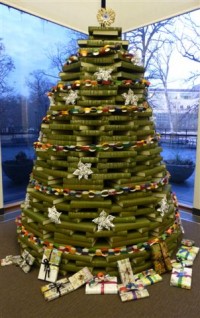 creating a large Christmas- themed display in the library.
The most prominent feature of our display is the nine foot Christmas tree. The tree is constructed from over 500 volumes of the National Union Catalog, a large collection of reference books. Prior to the internet, this catalog was the best resource for finding books in other libraries. The tree is decorated with snowflakes made from recycled book pages, and garland created from the colorful covers of old government publications. Beneath the tree are books from the library’s giveaway table that have been wrapped in newspaper and old maps already withdrawn from the collection. The packages are adorned with ribbon made from old cassette and VHS tape.
creating a large Christmas- themed display in the library.
The most prominent feature of our display is the nine foot Christmas tree. The tree is constructed from over 500 volumes of the National Union Catalog, a large collection of reference books. Prior to the internet, this catalog was the best resource for finding books in other libraries. The tree is decorated with snowflakes made from recycled book pages, and garland created from the colorful covers of old government publications. Beneath the tree are books from the library’s giveaway table that have been wrapped in newspaper and old maps already withdrawn from the collection. The packages are adorned with ribbon made from old cassette and VHS tape.
